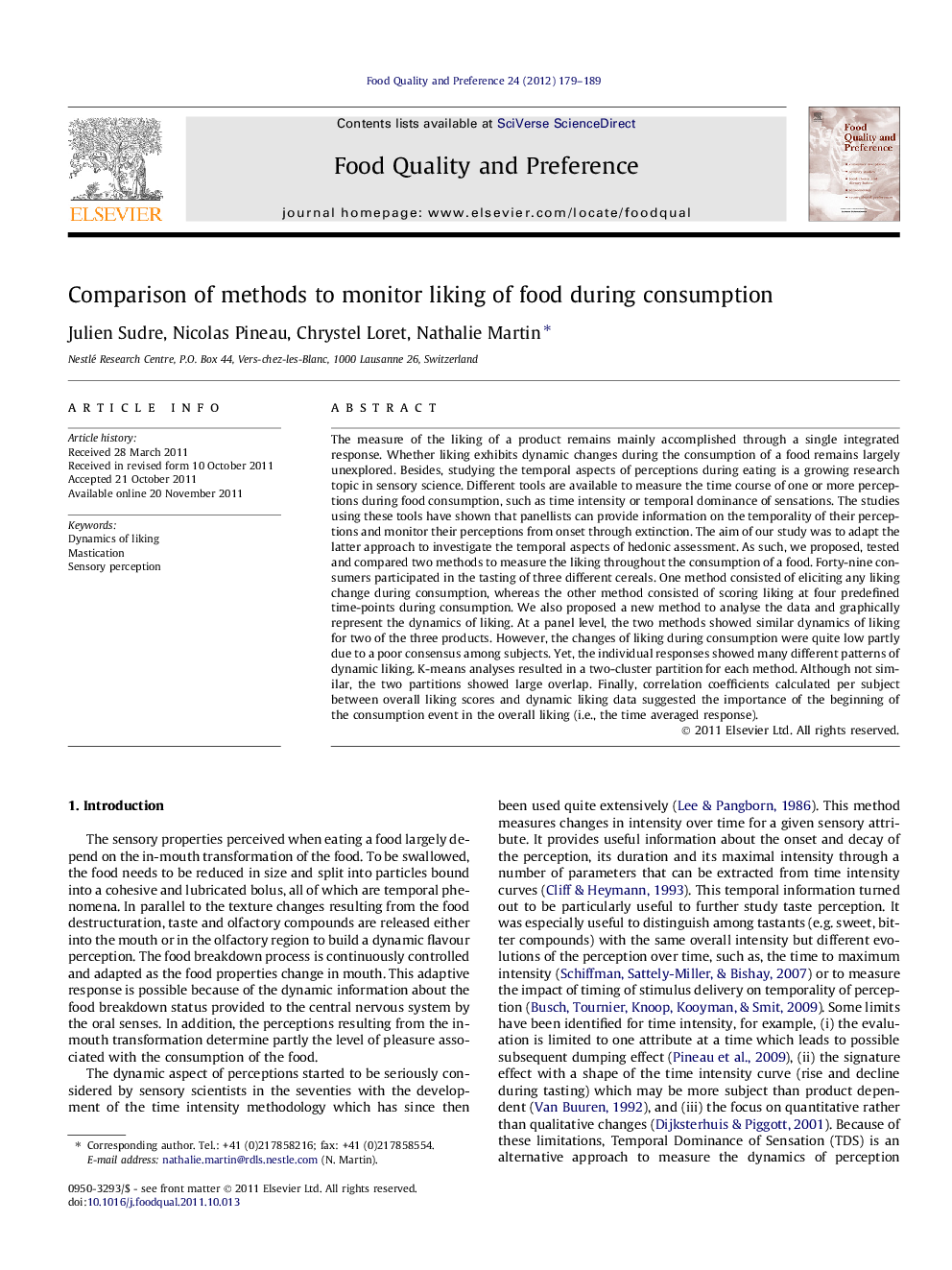| Article ID | Journal | Published Year | Pages | File Type |
|---|---|---|---|---|
| 6261490 | Food Quality and Preference | 2012 | 11 Pages |
The measure of the liking of a product remains mainly accomplished through a single integrated response. Whether liking exhibits dynamic changes during the consumption of a food remains largely unexplored. Besides, studying the temporal aspects of perceptions during eating is a growing research topic in sensory science. Different tools are available to measure the time course of one or more perceptions during food consumption, such as time intensity or temporal dominance of sensations. The studies using these tools have shown that panellists can provide information on the temporality of their perceptions and monitor their perceptions from onset through extinction. The aim of our study was to adapt the latter approach to investigate the temporal aspects of hedonic assessment. As such, we proposed, tested and compared two methods to measure the liking throughout the consumption of a food. Forty-nine consumers participated in the tasting of three different cereals. One method consisted of eliciting any liking change during consumption, whereas the other method consisted of scoring liking at four predefined time-points during consumption. We also proposed a new method to analyse the data and graphically represent the dynamics of liking. At a panel level, the two methods showed similar dynamics of liking for two of the three products. However, the changes of liking during consumption were quite low partly due to a poor consensus among subjects. Yet, the individual responses showed many different patterns of dynamic liking. K-means analyses resulted in a two-cluster partition for each method. Although not similar, the two partitions showed large overlap. Finally, correlation coefficients calculated per subject between overall liking scores and dynamic liking data suggested the importance of the beginning of the consumption event in the overall liking (i.e., the time averaged response).
⺠We designed two new methods to monitor liking for food during a mastication period. ⺠Liking changes are found individually but no consensus is reached at a panel level. ⺠The two methods show close results at a panel level and in clustering of consumers. ⺠The beginning of mastication seems to be the decisive for overall liking.
